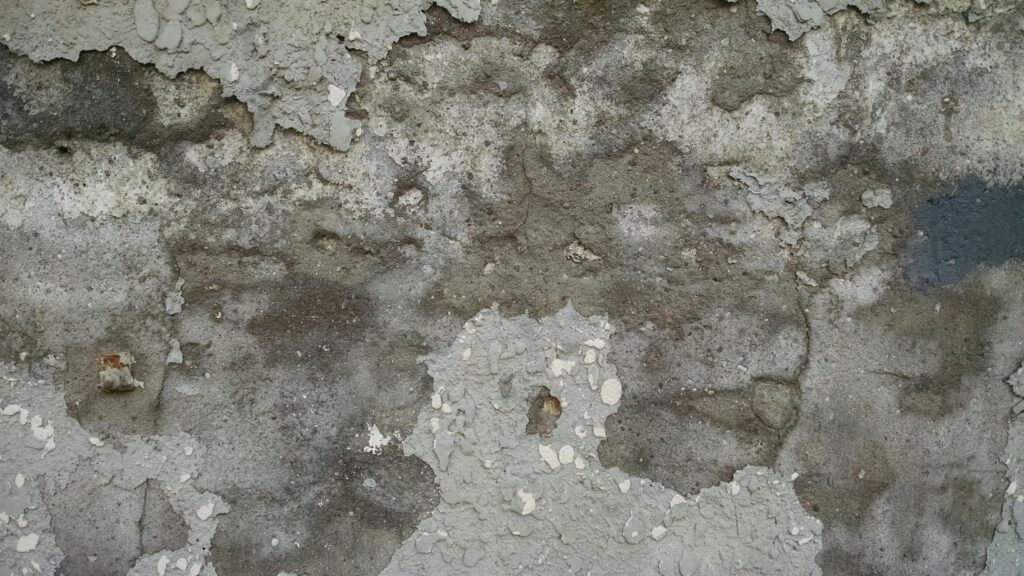Concrete spalling refers to areas where the surface of the concrete has chipped, flaked, or broken away. You’ll often see spalled concrete on sidewalks, parking decks, driveways, curbs, and building foundations. In Green Bay and other cold-weather areas, it’s a common issue due to harsh winters and freeze-thaw cycles.

Concrete spalling can lead to structural weakening, tripping hazards, and moisture infiltration if left unaddressed. That water can reach steel reinforcements inside the slab, accelerating rusting and internal damage. Timely repair of concrete spalls is critical—not just for appearance but also for safety and long-term durability.
How Do You Fix Spalling in Concrete?
Concrete spall repair typically involves the following steps:
- Surface Cleaning: The damaged area is cleared of loose debris, dirt, and deteriorated concrete.
- Edge Cutting: A clean perimeter is saw-cut around the spalled section to ensure a durable repair area.
- Surface Preparation: Contractors roughen the substrate and remove contaminants that could prevent bonding.
- Patching: A high-strength repair mortar or resurfacer is applied, often with bonding agents to ensure adhesion.
- Finishing: The patch is smoothed and blended to match the surrounding surface.
Proper timing and materials are key in colder climates like Green Bay. Repairs are best done during moderate temperatures and with freeze-thaw-resistant products.
What Can Cause Concrete Spalling?
Several factors can lead to concrete spalling, including:
- Freeze-thaw cycles: Water enters the concrete, freezes, expands, and breaks the surface apart.
- Corrosion of embedded rebar: Rusting steel expands and forces the surrounding concrete to crack and spall.
- Deicing chemicals: Salts used in winter can chemically deteriorate the surface.
- Heavy traffic or impact: High loads or repeated stress wear down the surface over time.
- Poor installation: Inadequate mixing, finishing, or curing weakens the concrete.
Wisconsin winters are especially tough on exposed concrete. That’s why property owners need to be proactive with repairs and maintenance.
What Does Spalled Concrete Look Like?
Spalled concrete is easy to identify once you know the signs. Look for:
- Pitted or flaking surfaces
- Shallow craters or chunks missing
- Exposed aggregate or rebar
- Discolored or rough patches
Spalling is often seen near joints, on edges, or in high-traffic areas like walkways, curbs, and loading docks. While it might start small, spalling typically gets worse over time, especially when exposed to snow, ice, and salt.
Can You Stop Concrete Spalling?
Yes—spalling can be stopped and prevented with the proper measures. Here’s how:
- Timely repairs: Address minor spalls before they expand into significant problems.
- Sealants: Use breathable concrete sealers to block water and deicing chemicals from penetrating the surface.
- Proper drainage: Keep water from pooling on or near concrete surfaces.
- Snow & ice management: Limit harsh deicers and use products that are safe for concrete.
- Routine inspections: Regularly check your concrete, especially after winter, for signs of early damage.
American Pavement Solutions offers maintenance plans and expert repairs for commercial properties in Green Bay to help you stay ahead of spalling.
Restore and Protect Your Concrete with American Pavement Solutions
If your parking lot, sidewalks, or curbs show signs of spalling, don’t wait for the damage to spread. At American Pavement Solutions, we specialize in concrete spall repair for commercial and municipal properties throughout Green Bay and the Upper Midwest. Our expert crews use proven methods and weather-resistant materials to make your surfaces safe and long-lasting.
Contact us today to schedule a free consultation or learn more about our full range of concrete and asphalt services.


